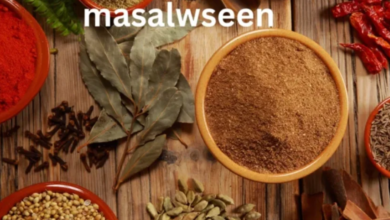The Timeless Appeal of ancient hero’s aspect Archetype Across Cultures

ancient hero’s aspect From the mythic legends of ancient Greece to the heroic tales of Norse warriors, the concept of the hero has captured the imagination of humanity for millennia. These ancient heroes, with their extraordinary feats and noble attributes, continue to fascinate and inspire people across cultures and generations. In this article, we delve into the rich tapestry of heroic myths from various civilizations, examining their enduring significance and exploring the universal themes they embody ancient hero’s aspect ancient hero’s aspect.
The Concept of ancient hero’s aspect
Heroism in ancient times was not merely about physical strength or prowess in battle; it encompassed a broader set of qualities that distinguished individuals as exemplary figures within their societies. Ancient heroes were often endowed with divine ancestry or supernatural abilities, setting them apart from ordinary mortals. They embodied virtues such as courage, honor, and selflessness, and their exploits served as moral exemplars for future generations ancient hero’s aspect.
In Greek mythology, heroes like Hercules and Achilles were celebrated for their valor in overcoming seemingly insurmountable challenges. Theseus, the legendary founder of Athens, symbolized the triumph of reason and justice over chaos and tyranny. Similarly, in Norse mythology, figures like Thor and Beowulf embodied the ideals of strength, bravery, and loyalty, undertaking epic quests to defend their people and uphold honor ancient hero’s aspect.
Greek Heroes
The pantheon of Greek heroes is as diverse and complex as the gods themselves. Among the most renowned is Hercules, son of Zeus and a mortal woman. Endowed with superhuman strength and resilience, Hercules embarked on a series of legendary adventures known as the Twelve Labors, facing formidable challenges that tested his courage and resourcefulness. From slaying the Nemean Lion to capturing the Golden Hind of Artemis, each labor showcased Hercules’ indomitable spirit and his willingness to confront adversity head-on ancient hero’s aspect.
Achilles, another iconic figure of Greek mythology, is best remembered for his role in the Trojan War. As the greatest warrior of the Greek army, Achilles was invulnerable except for his heel, making him nearly invincible in battle. However, his tragic flaw—his pride—ultimately led to his downfall when he was struck by an arrow to his heel, fulfilling a prophecy made at his birth. Despite his flaws, Achilles’ bravery and unwavering loyalty to his comrades have immortalized him as one of the greatest heroes of Greek mythology ancient hero’s aspect.
Theseus, the legendary king of Athens, is celebrated for his cunning and valor in overcoming various trials and challenges. His most famous exploit was the slaying of the Minotaur, a monstrous creature that dwelled in the labyrinth beneath the palace of King Minos of Crete. With the help of Ariadne, the daughter of King Minos, Theseus navigated the labyrinth and defeated the Minotaur, liberating Athens from its annual tribute of young men and women.
Norse Heroes
In Norse mythology, heroes were revered for their strength, courage, and loyalty to their kin. Among the most prominent Norse heroes is Thor, the god of thunder and son of Odin, the Allfather. Armed with his mighty hammer, Mjolnir, Thor embarked on numerous adventures to protect Asgard and Midgard from threats both mortal and supernatural. From battling frost giants to wrestling with the World Serpent, Thor’s exploits epitomized the Norse ideal of heroism: boldness in the face of adversity and unwavering devotion to one’s duty ancient hero’s aspect.
Beowulf, the titular hero of the Old English epic poem, is another iconic figure of Norse mythology. As a fearless warrior and noble leader, Beowulf undertook daring quests to rid his land of monsters and villains. His most famous adversary was the monstrous Grendel, who terrorized the kingdom of the Danes for years. With his exceptional strength and courage, Beowulf slew Grendel and his vengeful mother, securing peace and prosperity for his people ancient hero’s aspect.
Sigurd, also known as Siegfried in Germanic mythology, is celebrated for his legendary deeds and tragic fate. As the slayer of the dragon Fafnir and the hero of the Völsunga Saga, Sigurd embodies the archetype of the dragon-slaying hero who seeks glory and adventure. However, his story is marked by betrayal and tragedy, culminating in his death at the hands of those he once trusted. Despite his untimely demise, Sigurd’s bravery and valor continue to inspire awe and admiration in the hearts of storytellers and listeners alike ancient hero’s aspect.
Egyptian Heroes
In the ancient civilization of Egypt, heroes were often revered as demigods or divine beings who possessed extraordinary powers and abilities. Among the most revered Egyptian heroes is Horus, the falcon-headed god of the sky and protector of the pharaohs. As the son of Osiris and Isis, Horus played a central role in the mythology of ancient Egypt, embodying the ideals of kingship, justice, and divine authority. He was often depicted as a falcon or a man with the head of a falcon, symbolizing his role as a celestial guardian and avenger of wrongdoing.
Osiris, the god of the afterlife and the ruler of the underworld, is another prominent figure in Egyptian mythology. Revered as the first king of Egypt, Osiris was murdered by his jealous brother, Set, who coveted his throne. However, through the magic of his devoted wife, Isis, Osiris was resurrected and became the lord of the dead, guiding souls to the afterlife and ensuring their eternal rest. His story is a powerful symbol of resurrection and renewal, reflecting the cyclical nature of life and death in Egyptian belief.
Isis, the goddess of magic and motherhood, is celebrated for her unwavering devotion to her husband, Osiris, and her son, Horus. As the patroness of marriage and fertility, Isis was revered as the protector of women and children, granting them safety and abundance in their lives. Her magical powers were said to be boundless, allowing her to perform miracles and heal the sick. In Egyptian art and literature, Isis is often depicted as a veiled woman with outstretched wings, symbolizing her role as a compassionate guardian and divine intercessor ancient hero’s aspect.
Mesopotamian Heroes
In the cradle of civilization known as Mesopotamia, heroes were revered as semi-divine beings who performed extraordinary feats and accomplished great deeds. Among the most famous Mesopotamian heroes is Gilgamesh, the legendary king of Uruk and the hero of the Epic of Gilgamesh, one of the oldest surviving works of literature in the world. As a fearless warrior and wise ruler, Gilgamesh embarked on a quest for immortality after the death of his friend, Enkidu, seeking answers to the mysteries of life and death.
Enkidu, Gilgamesh’s loyal companion and friend, is a central figure in the Epic of Gilgamesh, embodying the untamed wildness of the natural world. Created by the gods to humble Gilgamesh and curb his tyrannical behavior, Enkidu eventually becomes the king’s most trusted ally and confidant. Together, Gilgamesh and Enkidu undertake a series of epic adventures, from battling the monstrous Humbaba to confronting the divine Bull of Heaven, forging a bond that transcends mortality and reshapes the destiny of their world.



